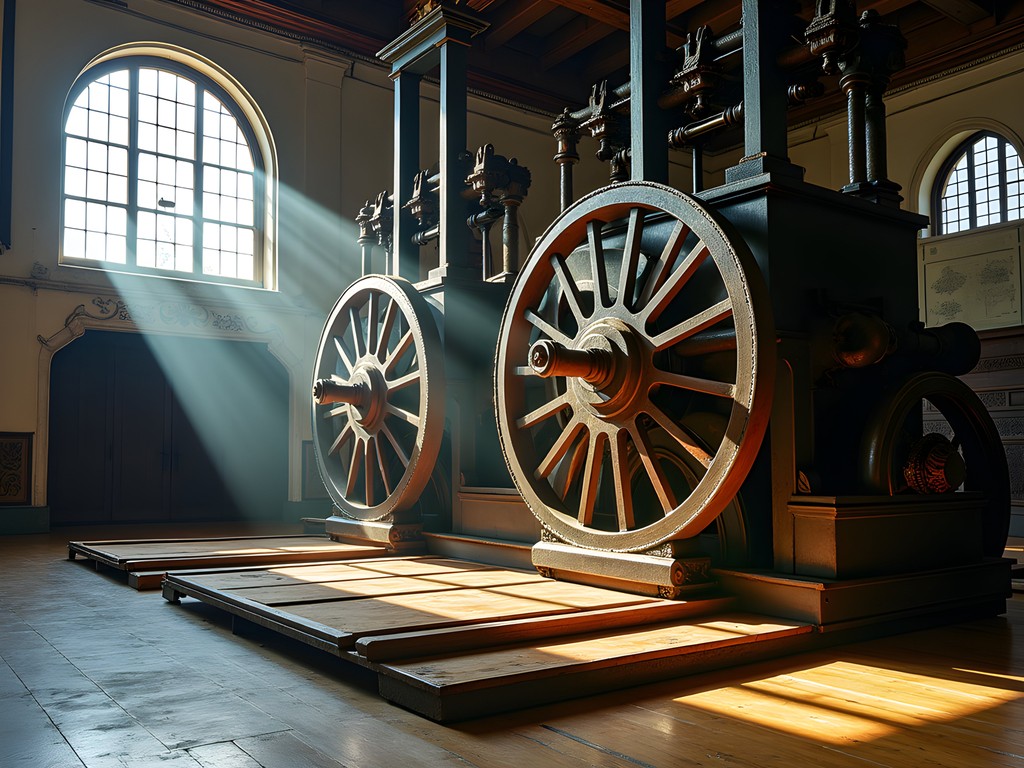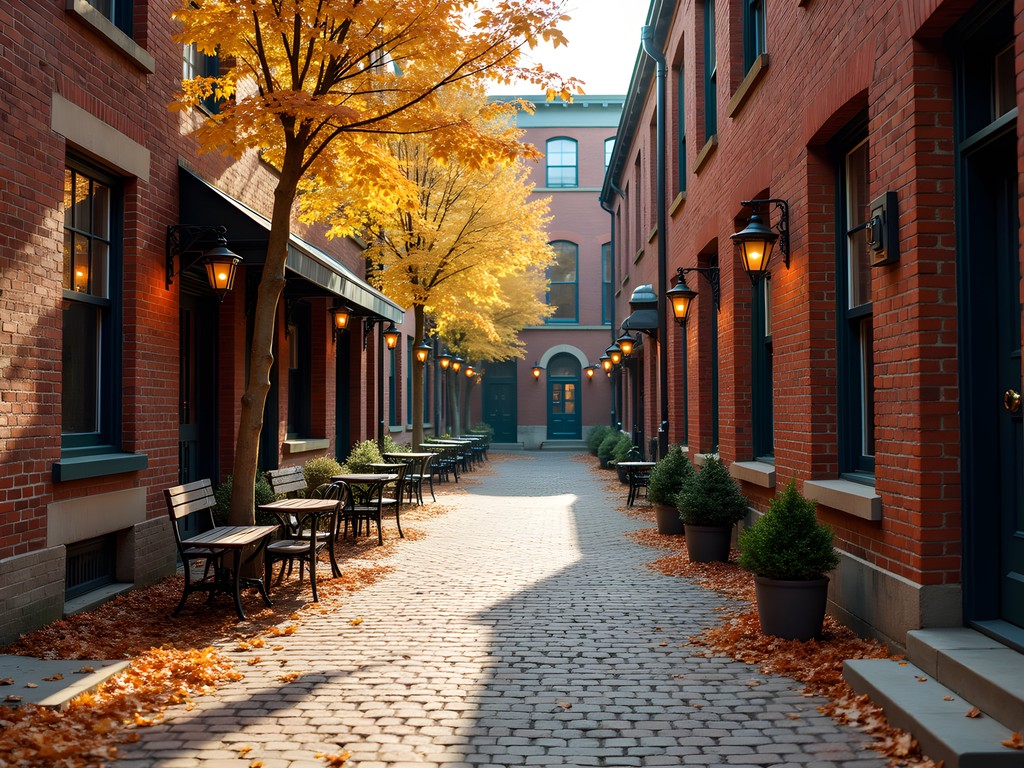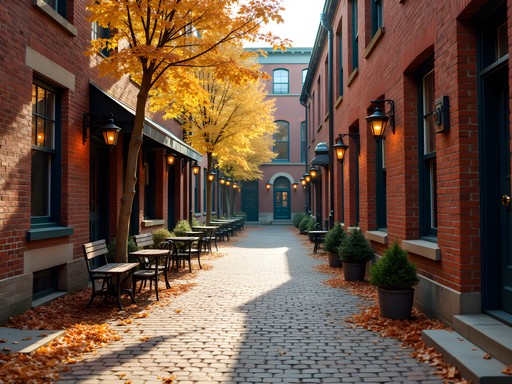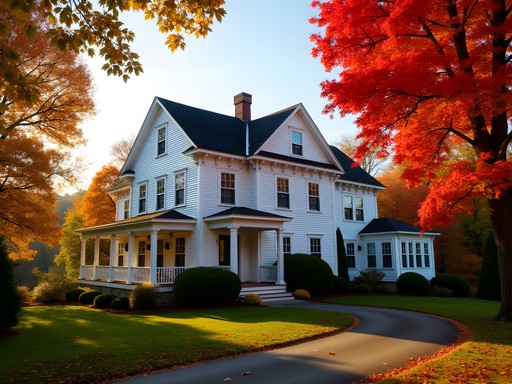Disclosure: This article contains affiliate links. We may earn a commission from purchases at no extra cost to you, which helps our travel content.
Like a local train that knows the scenic routes tourists rarely see, Rochester, New Hampshire, runs on tracks of history that most visitors miss while rushing between New England's more famous destinations. Having spent my childhood crisscrossing America by rail, I've developed a conductor's eye for spotting those hidden stations of history—places where time seems to slow to the gentle clickety-clack of a bygone era. This past autumn, I found myself with a weekend layover in Rochester, a charming mill town whose historical significance has been quietly gathering steam for nearly 300 years. Grab your partner's hand and let me guide you along these lesser-traveled spurs of New Hampshire history.
The Rochester Opera House: A Mechanical Marvel
My journey through Rochester's past began where many grand evenings once did—at the Rochester Opera House. Built in 1908, this architectural gem features something I've never encountered in my extensive travels: a remarkable floating floor mechanism designed by George L. Whitehouse. With the turn of a massive wheel, the floor transforms from flat to raked seating, creating what railroad engineers would appreciate as a masterpiece of mechanical ingenuity.
As I stood center stage, I couldn't help but imagine the performances that had graced this space—from vaudeville acts to political rallies—all witnessed by a floor that literally rises to the occasion. The volunteer guide, noticing my fascination with the mechanical aspects, allowed me to examine the original blueprints, a rare treat for someone who appreciates the craftsmanship of an earlier era.
The Opera House isn't just a museum piece; it's still the town's cultural junction, hosting performances throughout the year. If you time your visit right, you might catch a show while seated on this engineering marvel.

💡 Pro Tips
- Check their performance schedule before your visit to potentially catch a show
- Ask for a demonstration of the floor-raising mechanism if you visit during off-hours
- The balcony offers the best view of both the stage and the architectural details
Factory Court: Where Industry Meets Community
Just a short walk from the Opera House lies Factory Court, a brick-lined alleyway that once served as the pulsing artery between Rochester's textile mills. Today, this industrial passage has been transformed into a charming pedestrian plaza that hosts farmers markets and community gatherings.
What caught my railway man's eye were the original cobblestones, worn smooth by generations of mill workers' boots. Each stone tells a story of Rochester's industrial revolution—much like the weathered rails I've seen across Europe that bear witness to centuries of journeys.
My partner and I spent a delightful hour here, sipping local apple cider from insulated mugs that kept our drinks warm against the autumn chill. The brick walls still bear faded advertisements for products long discontinued, creating an atmospheric backdrop for couples looking to connect with both history and each other.
Don't miss the historical plaques that dot the courtyard, each one a station stop on Rochester's industrial timeline. I found myself particularly drawn to the stories of the female mill workers, whose labor kept this economic engine running through two world wars.

💡 Pro Tips
- Visit on Friday evenings in fall for the special market events with local vendors
- Look for the ghost signs (faded advertisements) on the brick walls
- Bring a small picnic blanket to enjoy lunch among the historical surroundings
The Granite State Childe Homestead: A Time Capsule of Colonial Life
Three miles outside downtown Rochester sits one of New Hampshire's best-preserved colonial homesteads. Dating back to 1740, the Granite State Childe Homestead reminds me of those rural train stations that time forgot—unchanged despite the world's rapid progress around them.
The homestead operates on a limited schedule and with minimal publicity, making it the perfect whistle-stop for couples seeking authentic history without the crowds. As someone who's visited grand palaces across Europe, I found the humble craftsmanship here equally impressive. The hand-hewn beams and original stone foundation speak to an era when buildings, like the earliest railways, were built to last centuries.
The volunteer docent, Mrs. Harrington, unlocked the door to the root cellar specifically for us when she learned of my interest in historical preservation. The temperature dropped noticeably as we descended the narrow stairs, and I was glad I'd brought my pocket flashlight to illuminate the ingenious storage systems our ancestors devised.
What makes this homestead special is that it's still furnished with period-appropriate items, many original to the house. The four-poster bed, complete with rope springs that needed regular tightening (hence the expression "sleep tight"), offers a glimpse into colonial sleeping arrangements that makes you appreciate modern mattresses!

💡 Pro Tips
- Call ahead to confirm opening hours as they operate seasonally with limited hours
- Wear comfortable shoes as the original floorboards can be uneven
- Ask about the special candlelight tours offered during the harvest season
Pickering Ponds Historic Dam System
My fascination with infrastructure naturally drew me to the Pickering Ponds area, where Rochester's industrial history converges with natural beauty. This network of walking trails winds around a series of 19th-century dams that once powered the city's textile mills—much like how coal once powered the great steam locomotives that opened America.
What most visitors miss is the ingenious water management system created here, with sluices and channels directing water flow with precision that would impress any engineer. The main dam, constructed in 1820, stands as a testament to industrial-era craftsmanship, its granite blocks fitted so precisely that even after two centuries, you can barely slip a pocket knife blade between them.
Autumn transforms this historical site into a canvas of reds and golds, with the still waters of the ponds creating perfect mirrors for the foliage. My partner and I spent hours here, following the trail markers that explain how each component of the water system functioned. The experience combines industrial archaeology with a peaceful nature walk—ideal for couples who appreciate both history and the outdoors.
Bring a thermos filled with hot chocolate or cider to enjoy at one of the wooden benches overlooking the main dam. The sound of water flowing through the original channels provides a soothing backdrop for conversations about how places like this powered America's industrial revolution.

💡 Pro Tips
- Visit in early morning for the best light and reflections on the pond surfaces
- Download the free historical guide from Rochester's historical society website before visiting
- The trail can be muddy after rain, so proper footwear is essential
Rochester Cemetery: Stories Set in Stone
I've always found that cemeteries are like the quiet observation cars on a heritage railway—places where you can sit peacefully while history unfolds around you. Rochester Cemetery, established in 1722, is one of New Hampshire's oldest and most historically significant burial grounds, yet tourists rarely include it on their itineraries.
What makes this cemetery exceptional is its collection of early American gravestone art. The changing styles of headstones—from the grim death's heads of the early 18th century to the more hopeful willow-and-urn motifs of the early 19th century—chart the evolution of American attitudes toward mortality. I was particularly moved by the tiny lamb carvings marking children's graves, silent testimonies to the harsh realities of colonial life.
The cemetery contains the final resting places of Revolutionary War veterans, early industrialists who established Rochester's mills, and ordinary citizens whose stories are etched in weathered slate and marble. My partner and I spent a contemplative afternoon here, using a stone rubbing kit to carefully document some of the most intricate carvings.
Unlike the crowded tourist cemeteries of Boston or Salem, Rochester Cemetery offers a quiet, intimate connection with early American history. The autumn leaves create a colorful canopy over the oldest sections, and the slanting afternoon light brings out details in the stone carvings that might otherwise go unnoticed.

💡 Pro Tips
- Visit with respect—this is still an active cemetery with recent burials
- Bring a notebook to record interesting epitaphs or symbols you encounter
- The oldest sections are in the northwest corner, nearest to the original town settlement
Final Thoughts
As my weekend in Rochester drew to a close, I found myself standing on the platform at the Amtrak station, reluctant to board my departing train. Like many small New England towns, Rochester doesn't announce its historical significance with flashy attractions or aggressive marketing. Instead, it reveals itself gradually to those willing to step off the main line and explore the branch routes of history.
What makes these five sites special isn't just their historical significance but their authenticity. Unlike the polished, commercialized historical attractions in more touristy destinations, Rochester's hidden gems retain the patina of genuine history—places where the past doesn't perform for visitors but simply exists, waiting to be discovered.
For couples seeking a meaningful weekend getaway, Rochester offers something increasingly rare: the chance to connect with history in a personal, unhurried way. As you wander these sites hand-in-hand, you'll find yourselves not just observing history but experiencing it together, creating your own memories against the backdrop of centuries past. The next time your travels take you through New Hampshire, pull the signal cord and make an unscheduled stop in Rochester. History is waiting here, running on tracks parallel to our own.
✨ Key Takeaways
- Rochester offers authentic historical experiences without the crowds of more famous New England destinations
- Fall is the ideal season to visit these sites, with perfect weather and beautiful foliage enhancing the historical atmosphere
- These budget-friendly historical attractions are perfect for couples seeking meaningful connection with both history and each other
📋 Practical Information
Best Time to Visit
September to early November
Budget Estimate
$200-300 for a weekend (including accommodations)
Recommended Duration
2-3 days
Difficulty Level
Easy
















Comments
wildqueen
Has anyone visited the Rochester Opera House? I'm curious about that mechanical floor you mentioned - how does it actually work?
summerlegend
I was there last spring! The floor is on a patented system that can tilt from flat to sloped for different events. It's all run on the original mechanisms from the 1900s - pretty impressive engineering for that time. They do guided tours if you call ahead.
wildqueen
That sounds amazing! Definitely going to schedule a tour. Thanks!
waverider
Wow! Never thought Rochester would have so much hidden history! Definitely adding this to my New England road trip plans.
NHExplorer
Great post! Don't miss the cider donuts at the farmers market near Factory Court if you're there on a Tuesday!
Jennifer Rodriguez
Ronald, this is exactly the kind of content I love - highlighting places that aren't on typical tourist itineraries. I visited the Granite State Childe Homestead last year while researching New England colonial architecture and was blown away by how well-preserved it is. For anyone planning to visit, I recommend bringing a good pair of walking shoes as the property is quite extensive. I tracked our entire walking route with my hiking GPS which showed we covered almost 3 miles just exploring the grounds and outbuildings. The docents there are incredibly knowledgeable too - ask for Martha if she's still volunteering!
Ronald Parker
Thanks Jennifer! Great tip about Martha - she was my guide too and her knowledge of colonial furniture was incredible. Did you manage to see the root cellar? It's easy to miss but fascinating.
Jennifer Rodriguez
Yes! The root cellar was a highlight - such an ingenious cooling system they had. I was impressed by how they maintained consistent temperatures year-round without electricity.
oceanrider
Just got back from Rochester last weekend and wish I'd seen this post before going! We stumbled upon Factory Court by accident during lunch and were surprised by the live music. The historical plaques were fascinating - I had no idea about the shoe manufacturing history there. Missed the Opera House though, which now I'm really regretting after reading about that mechanical floor. Guess I'll need a return trip!
nomadvibes
Did you find any good places to eat while you were there?
oceanrider
Yes! We ate at Revolution Taproom downtown - amazing craft beers and farm-to-table food. Highly recommend their burger!
wavelover
Great post! How much time would you recommend for exploring the Pickering Ponds dam system? Is it a quick stop or more of a half-day activity?
Ronald Parker
I'd set aside at least 2-3 hours for Pickering Ponds if you enjoy walking. There are several trails that connect the different dam structures, and the autumn colors make it especially beautiful right now.
nomadvibes
Never would have thought Rochester had so much hidden history! Definitely adding these spots to my New England road trip next spring.
Ronald Parker
Thanks! Let me know if you need any other tips when planning your trip. The Opera House has a fantastic seasonal program worth checking out.
nomadvibes
Will do! Are any of these sites accessible in winter? I might actually be passing through in January.
TravelingTeacher42
How accessible are these sites for someone with mobility issues? My mother uses a walker and I'd love to take her to see the Opera House especially.
RochesterLocal603
The Opera House has an elevator and good accessibility. The Pickering Ponds paths might be challenging though - they're not all paved. Factory Court is completely flat and easy to navigate!
TravelingTeacher42
Thanks so much for the info! That's really helpful.
Sarah Powell
Ronald, your piece on Rochester really resonates with my experience there last fall. The Granite State Childe Homestead was the highlight of my trip - I'd recommend visitors time their visit during one of their living history weekends when volunteers demonstrate colonial crafts and cooking techniques. One site I'd add to your list is the Rochester Historical Society Museum downtown. It's small but houses an impressive collection of mill artifacts and indigenous items from the region. I documented my visit in my travel journal which has been perfect for these New England historical deep-dives I've been doing lately.
RochesterLocal603
The living history weekends are amazing! They usually do them the second weekend of each month from May-October. The bread baking demonstration is worth the trip alone.
Sarah Powell
Yes! I still dream about that sourdough they make in the brick oven. Do you know if they're continuing the program next season?
photoninja
Never would have thought Rochester had so much history! Those mechanical floors at the Opera House sound incredible.
Sarah Powell
Right? I was there last year and actually got to see them in action during a performance. The way the entire floor transforms is such a unique engineering feat for its time!
photoninja
Wow, lucky you! Is it open year-round for tours?
Sarah Powell
They do guided tours on Thursdays and Saturdays, but call ahead because sometimes they close for rehearsals. Worth planning around!
Venture X
Premium card with 2X miles, $300 travel credit, Priority Pass